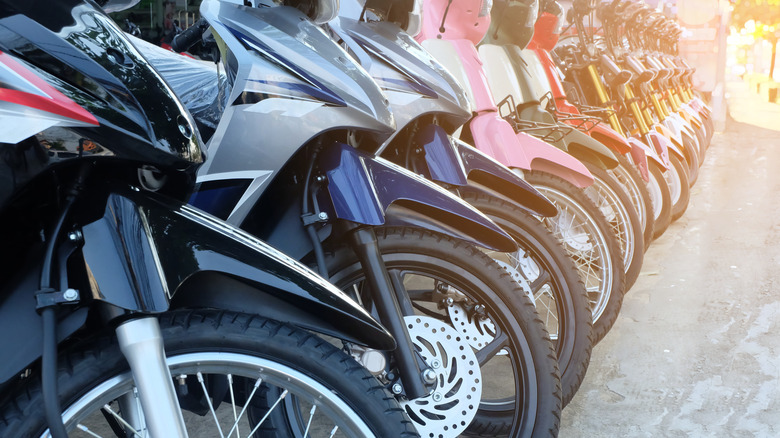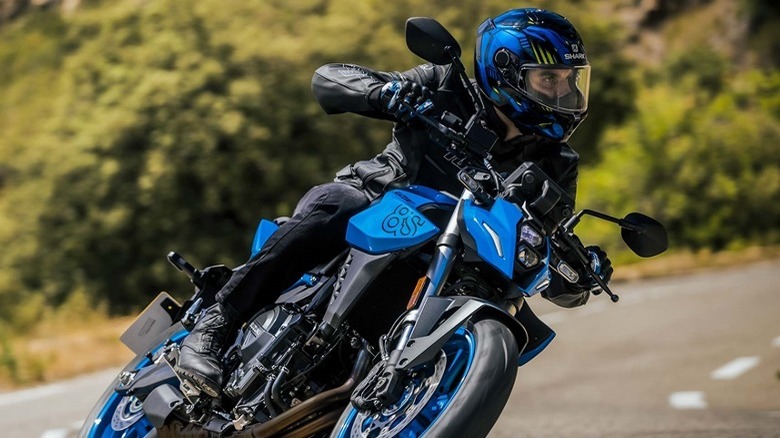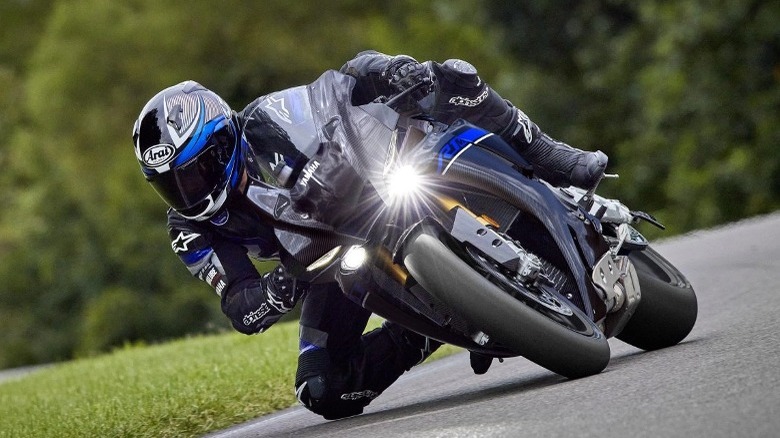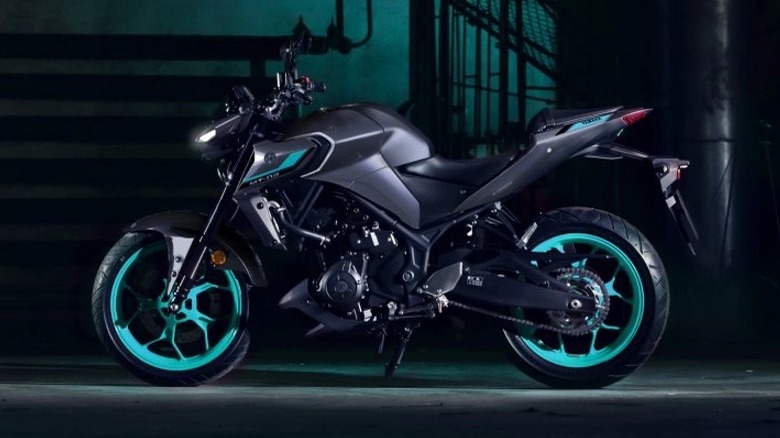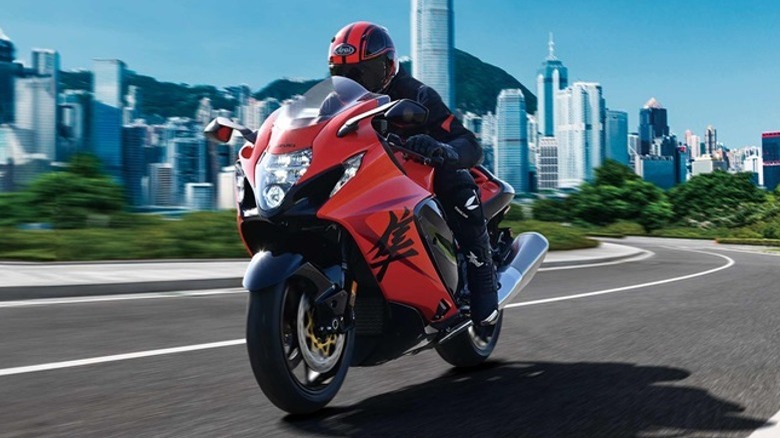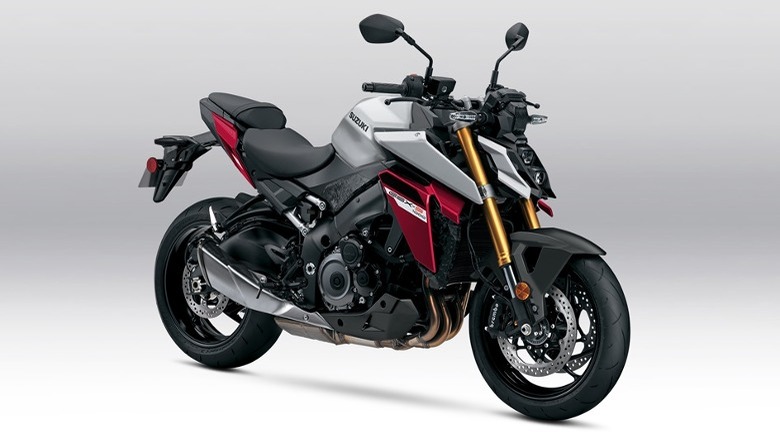Suzuki Vs Yamaha Street Bikes: Is One Brand Better?
Japanese manufacturers have all but completely eclipsed the market when it comes to street bikes. There are a couple of European manufacturers that have managed to put out some decent options, but very few brands have dominated the global market like Yamaha and Suzuki. Both of these companies have been producing some of the best and most reliable motorcycles on the road for decades. Both have solid reputations that have been earned from over half a century of consistently delivering motorcycles that compete at the highest levels of performance. Neither one is a bad option by any metric, but have you ever wondered which brand is better?
Comparing two massive motorcycle brands is a tricky proposition. There is such a wide range of different factors to consider, and so many of them come down to personal preference. One might offer better high-end bikes, while the other offers better value. One might have a wide range of different models, while the other has a small, immaculately curated offering. There will certainly be differing opinions, as both brands have die-hard fans. Then, of course, there are factors like design which are even more subjective. That said, we can take a look at the performance, affordability, reliability, and overall sales that have been reported for some of their more popular models and see if any patterns start to emerge.
Performance
There are a lot of metrics for measuring performance and both Yamaha and Suzuki offer a wide range of different street bikes in different styles, weights, and engine sizes. Let's start off by taking a look at a couple of the sportier midsized bikes: The Suzuki GSX-8R and the Yamaha YZF-R7. These bikes have similar engine sizes and designs. The R7 is one of the most popular bikes in the Yamaha Line. It has a 689cc liquid-cooled, inline 2-cylinder DOHC fuel-injected CP2 engine. This bike is known for its aggressive cornering performance. The 8R has a bit more power, with a new-generation 776cc parallel-twin engine giving it just under 10 extra horsepower to play with and stronger acceleration.
TopSpeed compared the two bikes extensively in a side-by-side review. "The new GSX-8R is more than capable of taking on and dethroning the YZF-R7," it stated. "It has better features and more power, plus promises an easier to live with experience." The only major advantages that TopSpeed believed the YZF-R7 had over the GSX-8R was its lighter weight and sportier ergonomics. The naked bike alternatives from both brands, the MT-07 and GSX-8S, both have the same respective engines under the hood as their sportier cousins, so you can probably expect similar results there.
With that in mind, however, it's important to note that the Suzukis are working with a newer engine. Older Yamaha's have edged out their contemporaries from Suzuki, and there's no telling what next year's models will look like.
Cost
The price tag is always a factor when comparing bikes. There are plenty of people out there who probably don't want to drop hundreds of extra dollars on a bike of similar size, even if it does perform a hair better than its competitor. Luckily, Suzuki and Yamaha are known for being moderately affordable -– especially when compared to their European competitors. None of their bikes are outrageously expensive, but is one typically cheaper than the other?
Yamaha sells six models of naked bikes which start at $5,000 and run to $16,999, and it sells only four Supersport models which go from $5,499 to $27,399. The Suzuki's seem a bit more varied. The company sells seven naked bikes which start at $7,399 and go to $11,699. Then it has ten sport models, ranging from $5,099 to 19,099. This paints an interesting picture of the two companies' overall lineups. Yamaha has a smaller range of models, but a wider range of price points than Suzuki. This means that Yamaha has options at either end of the spectrum that Suzuki doesn't, such as the budget MT-03 and the super high-end YZF-R1M, which takes sports bikes to a whole new level. The closest thing Suzuki has is the $19,099 Hayabusa. Suzuki instead offers a significantly wider variety in the middle ground, where most riders are shopping.
That said, most comparable bikes from both companies are priced within a few hundred dollars of each other. The Yamaha YZF-R1 Is $18,399 while the Suzuki GSX-R1000R is $18,499. On the cheaper side, the Suzuki GSX250R ABS is $5,099 and the slightly larger Yamaha YZF-R3 is $5,499.
Reliability
It's challenging to measure reliability on newer models, but both Yamaha and Suzuki have sterling reputations for building bikes that can really rack up miles, so long as they receive proper care and maintenance. In fact, Consumer Reports published a study on the most reliable motorcycles in the world back in 2015. It found that Yamaha and Suzuki were actually the two most reliable brands on the market.
Consumer Reports gathered this information by taking a survey of 12,300 of its subscribers and asking them about the failure rates of four-year-old motorcycles, adjusting for mileage and estimated repair rates. This constituted a reasonable timeline where they could see the results of natural wear and tear, without having to factor in the innumerable variables that would come into play if they had to account for long-term maintenance levels. Yamaha took the number one spot with an 11% failure rate and Suzuki was right behind it at 12%, tying with Honda and edging out Kawasaki which sat at 15%. Of course, all of these scored significantly higher than European brands like Triumph, Ducati, and BMW which sat at 29%, 33%, and 40% respectively.
This seems to illustrate a slight advantage toward Yamaha, but really, they are neck-and-neck. Suzuki is close enough on its heels that one could easily attribute the difference to a margin of error in this sample size.
Sales
Another thing to consider is popularity. If one brand is selling a lot more sales than another, then you might want to consider why so many people have chosen that brand over the alternatives. This appears to be the only metric where one brand really stands above the other.
Motorcycle Data shared the highest-grossing motorcycle brands for 2023. Honda took first place, as it has for the last 50 years, dominating the industry with $18.4 million in sales. Still, Yamaha has been slowly ramping back up and value and took third place with a respectable $4.6 million in sales. This represents a 0.9% increase in market share from the previous year. Suzuki came in seventh, selling $1.9 million in 2023. That's less than half of what Yamaha sold, but it's worth noting that it was a 7.1% increase from the company's sales in 2022. So Suzuki appears to have dramatically outpaced Yamaha in growth, even though it might still not be able to match its competitor in overall sales.
It's also worth noting that this sales data isn't exclusive to street bikes, but represents motorcycle sales across all two-wheeled vehicles manufactured by these respective brands. It's possible that the numbers would look different if off-road models or cruisers were removed from the equation, but it appears that neither brand reports sales based on individual model types.
Verdict
Yamaha and Suzuki both have their fans, and both can probably list a myriad of reasons why they think their preferred brand makes the superior street bike. It would be nice if there was an easy answer. Unfortunately, it isn't that simple. There are some newer Suzukis that outperform Yamahas, but Yamaha has made models that outperformed comparable Suzukis in previous years.
This mostly seems to come down to whichever brand has the more recently developed engine, with a few other engineering considerations. It's difficult to give a clear recommendation on who makes the superior product. Yamaha has more high and low-end options, for those who are new to riding and looking to get something small and affordable or aficionados who want to get the best street bike money can buy. Meanwhile, Suzuki offers a wider selection of midrange bikes for the casual riders who comprise most of the market. Both brands have similar pricing models and both are considered to be among the most reliable motorcycle manufacturers in the world.
So, is one brand better? Not really. Both Suzuki and Yamaha are neck and neck in performance, reliability, and value–though Yamaha seems to have a slight edge in popularity. You're better off looking at the feature sets offered by the individual street bike that you're looking to buy and choosing the one that best suits your needs, regardless of brand.
Our Methodology
I've been riding street bikes for 15 years. I'm mostly a Honda rider, but I've sat in the saddle of several different Japanese bikes over the years. In order to make this list, I applied my knowledge of street motorcycles to come up with four different metrics for gauging the quality of a brand: performance, cost, reliability, and overall sales. By taking a look at each of these, I'd hoped that I would be able to shed some clarity on which brand made the better street bike. I searched for reliable sources that tested these factors and compared similar models from each brand.
Then, with the results in hand, I explained why I believe that there isn't a clear enough difference in quality between the two brands for either of them to merit a blanket recommendation.
